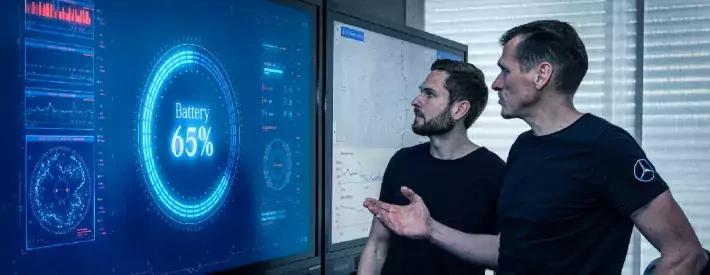Why software defined vehicles need your attention

A Software Defined Vehicle (SDV) is any vehicle that manages its operations, adds functionality, and enables new feature primarily or entirely through software. SDVs are part of the evolution of the automotive industry, bringing with it the complexities and challenges already apparent of any software technology.
As car parcs are more densely populated by larger vehicles capable of higher speeds, all operating in many areas within lanes not much different from their much smaller and slower analogue forerunners, enabling vehicles to assess danger and make decisions becomes critical for road safety. So, mandatory inclusion of some Advanced Driver Assistance Systems (ADAS) is becoming necessary across the world.
Staying safe
General Safety Regulation is an umbrella term for a group of regulations, split into the following categories:
- Restraint Systems, crash testing, fuel system integrity, high voltage electrical safety
- Vulnerable road users, vision and visibility
- Vehicle chassis, braking, tyres, and steering
- Onboard instruments, electrical system, vehicle lighting, protection against unauthorised use/cyber attacks
- Driver and system behaviour
- General construction and features
And it’s these areas that SDVs will have to be aware of. To do that, an enormous amount of data is going to be churned through.
So it’s unsurprising that big tech firms are supporting the shift to SDVs, and newer firms are making it central to their business model.
Tesla is well known for taking a data driven approach using a modified Linux Ubuntu operating system, spreading its cloud service bets across Azure and Amazon Web Services (AWS). But the incumbent manufacturers are becoming more involved in this aspect of the industry.
Renault Group has expanded its original deal with Google, first brokered in 2018 and part of a broader partnership with the Renault, Mitsubishi, and Nissan, adopting Google’s native car operating system, offering built in Google Assistant, Maps and PlayStore to the motorist.
And the collaboration is expanding. Google and Renault are creating a “digital twin”, a virtual copy of a vehicle that offers advanced artificial technology capabilities reportedly to allow “for easier and continuous integration of new services into the vehicle and the creation of new onboard and offboard applications”.
The desired outcome is that this will improve the vehicle’s operations through improved, real-time diagnostics. The opportunities to recommend to motorists maintenance or repairs is one advantage, as is the opportunity for greater integration with insurance services from increased surveillance of driver technique and behaviour.
The vehicle will also accurately map locations and frequent ports of call which has been touted as offering a personalised experience for the driver. Think highly tailored and targeted advertising.
The benefits of cloud-based software for continuous over-the-air-updates will improve road safety as more systems rely on software solutions, that in turn rely on patches and updates – the digital maintenance equivalent of filters and fluids.
While we’re all focused on the shift away from the combustion engine, we need to remember it isn’t just a shift in powertrain technologies, but also how vehicles become part of our digitised lives. It’s an enormous part of the future, improving vehicle safety and new ways to interact with users




